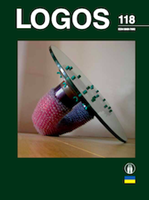Tamga as an Element of Intertribal and Intercultural Relations of the Turks in the Periods of Ancient History and the Middle Ages
Tamga as an Element of Intertribal and Intercultural Relations of the Turks in the Periods of Ancient History and the Middle Ages
Author(s): Utelbek ShananovSubject(s): Cultural history, Social history, Ancient World, Culture and social structure , Sociology of Culture, 6th to 12th Centuries, 13th to 14th Centuries, 15th Century
Published by: Visuomeninė organizacija »LOGOS«
Keywords: sign; Sarmatians; Turkic Khaganate; Mongol Empire; Giray dynasty;
Summary/Abstract: The study of the history and culture of different peoples, especially their intercultural interactions, deepens our understanding of world history. The aim of this article is to determine the role of tamgas in the intertribal and intercultural relations of steppe peoples during the ancient and medieval periods. A systematic analysis of various sources identifies tamgas as tribal distinguishing marks, artisan symbols, signs of aristocracy, and indicators of allegiance to Mongolian rulers. The study highlights the interactions of the tamga with the ancient Hungarians, the Indians, the Chinese, and the Rurik dynasty. The study presents a generalised view of the role of the tamga for the Turks in specific historical periods.
Journal: LOGOS - A Journal of Religion, Philosophy, Comparative Cultural Studies and Art
- Issue Year: 2024
- Issue No: 118
- Page Range: 151-164
- Page Count: 14
- Language: English

